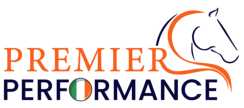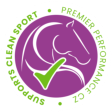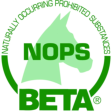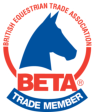in basket
Understanding your horse’s gastric health
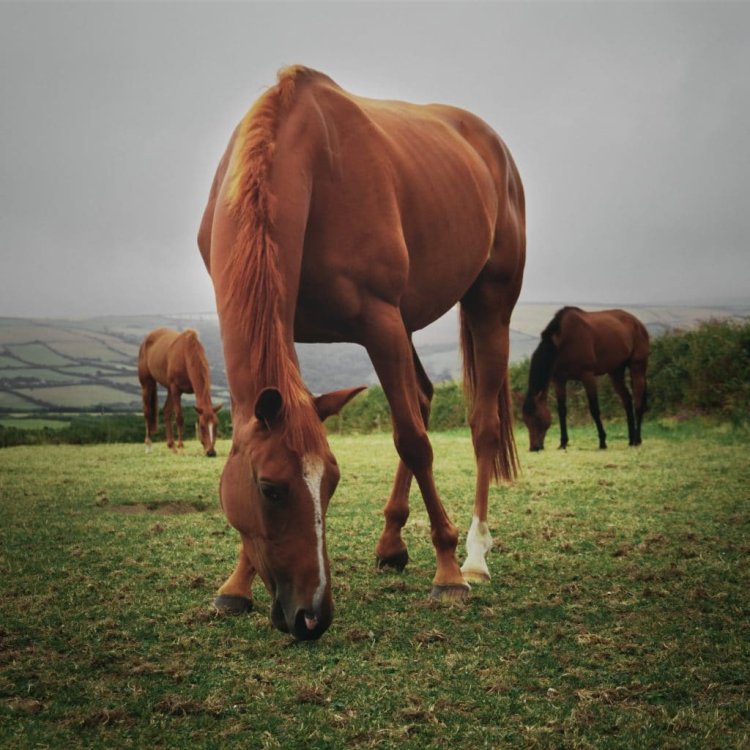
Introduction
To be able to manage your horse’s diet appropriately, it’s important to understand the anatomy and physiology of the gastrointestinal tract in health. It’s also important to appreciate what dietary management practices promote gut health and how less adequate approaches can impact on the development of problems in the gastrointestinal tract, which may in turn affect the overall health, performance and behaviour of the horse. The focus of this article is gastric health. The terms “gastric” means “of the stomach”; thus, gastric health means the health of the stomach. However, to appreciate gastric health it’s important to have a general understanding of the gastrointestinal tract overall.
Overview of your horse’s gastrointestinal tract
The horse has a digestive tract that consists of three functional regions; 1) the stomach, 2) the small intestine, and 3) large intestine, often referred to as the hindgut. Collectively the stomach and the small intestine are termed the foregut. Therefore, we often talk about the foregut and the hindgut in horses. The foregut, in the horse has a similar function to our own in that this is where enzymatic digestion of food takes place. Enzymes produced by the horse’s body breakdown protein, fats, starch and sugars that are then absorbed across the gut wall in the small intestine. Whereas, in the hindgut, there is no enzymatic digestion. Instead, billions of micro-organisms breakdown the food particles that have not been digested in the foregut. The digesta that reaches the hindgut is predominantly comprised of fibre and some protein. The horse cannot digest fibre in the foregut as it does not produce any enzymes to breakdown the fibre in the feed. Instead, the micro-organisms that live in your horse’s hindgut make use of the fibre for themselves to live and they produce what is called volatile fatty acids (VFAs), which are absorbed across the gut wall in the hindgut and are used as an energy source for the horse.
Your horse’s mouth
Before we talk about your horse’s stomach, which is the focus of this article, it’s important to note that digestion begins in the mouth. The horse has 12 incisor teeth that bite the food, selected by the upper lip. The pre-molar and molar then then grind the food to reduce the size of the particles. The horse has 12 pre-molar and 12 molar teeth. During the process of grinding the food is also mixed with saliva secreted from salivary glands as a direct response to mastication. It is very important to be aware that, in horses, saliva is only produced as a direct response to chewing. This is different to humans and other species. What this means is that the amount of saliva produced is proportional to the amount of chewing, which in turn is dependent on the physical nature of the feed. For example, horses chew four times as much, and produce twice as much saliva production, when eating forages compared to concentrates.
Mature horses can produce 40 litres of saliva per day, which is why horses need to drink so much water for optimal health. A mature horse at rest in a moderate climate will consume between 3 and 7 litres of water per 100kg bodyweight, which equates to between 15 and 35 litres. Diet affects water intake and horses fed dry hay will consume more water than those eating fresh pasture, which contains a lot of water. In horses, saliva contains no digestive enzymes; however, it plays a very important role as a lubricant for the passage of the food down the oesophagus into the stomach. Another very important function of saliva is that it acts as a buffer, which means it helps to maintain a pH of between 6 and 7 in the upper part of the horse’s stomach.
Your horse’s stomach
To better understand what can affect gastric health, it’s important to know a little about the anatomy and physiology of your horse’s stomach. Firstly, the horse’s stomach is relatively small for an animal of its size and compared to the rest of its gastrointestinal tract; think of it being around the size of a rugby ball. The reason horses are referred to as trickle feeders is that they are designed to eat on an almost continuous basis rather than eating large meals in one go.
The anatomy of the horse’s stomach is different from some other species and is divided into two main areas (top and bottom). The top part of the stomach where the food enters first is called the non-glandular region, but can also be referred to as the squamous region due to the squamous lining. This area has a fairly neutral pH of between 5 and 7, which is maintained by the buffering effects of saliva. This part has no glands, hence the name non-glandular, and thus does not produce any secretions. The lining of the non-glandular region of the stomach is susceptible to damage if the pH is reduced.
The bottom part is known as the glandular region because it produces secretions that aid digestion, including hydrochloric acid. Therefore, this part of the stomach is acidic and has a pH of 1 to 2. However, the lining of this area is protected from the low pH by a mucous layer.
Factors affecting gastric health
The area of the stomach that is most susceptible to damage is the non-glandular (top) region. Ulcers can form in this area if a pH of between 6 and 7 is not maintained. When ulcers form in this part of the stomach it is referred to as equine squamous gastric disease (ESGD). If the pH drops below 4 then this can cause ulceration of the lining of this part of this region. Unfortunately, studies have shown that horses are prone to developing ESGD. When ulcers develop in the lower part (or glandular region) of the stomach this is known as equine glandular gastric disease (EGGD). Therefore, the term equine gastric ulcer syndrome (EUGS) comprises ESGD or EGGD, or both.
Factors that can affect the development of EGUS, include a low forage diet. If the horse is not chewing enough then it is not producing as much saliva and this can reduce the pH, particularly in the top region of the stomach. Research has shown that feeding large meals of concentrates that are high in starch is also problematic as the horse needs to chew this type of feed less, plus the feed itself can contribute to a drop in pH. Therefore, horses fed large amounts of concentrates are considered at higher risk of developing ulcers. Periods of fasting can contribute to EUGS; studies have shown that horses should not have no access to forage for any more than 3 hours. Again, if horses are not chewing, then they are not producing saliva. Therefore, long periods between meals (including forage provision) are undesirable. Lack of turnout to pasture and long periods of stabling are also risk factors for the development of EUGS.
Exercise can also contribute to gastric ulcers in the top part of the stomach, research has shown that when horses begin trotting the pH of the non-glandular (top) region of the stomach dropped and this was greater when the horses were cantered and galloped. This appears to be attributable to what is described as “splashing” or “pushing” of the acid contents of the glandular (bottom) region up into the top part. Studies have also identified stress as another potential cause or ulcers, it is thought that tension or tightness in horses may cause a similar effect of “pushing” acid up into the top part of the stomach.
Maintaining gastric health
Maintaining gastric health is similar to maintaining gut health. Ensure enough forage or access to pasture is provided to maintain gut health and satisfy the behavioural needs of an animal that has evolve to eat for over 16 hours per day. If your horse needs to have a restricted diet, then use small-holed haynets to increase eating time and reduce the time spent with no access to forage. Try to avoid feeds that are high in starch and instead use high-quality fibre feeds, such as alfalfa and sugar beet pulp. Adding alfalfa to the diet can also help maintain pH in the upper part of the stomach, as alfalfa can help buffer any decline in pH. Unmolassed alfalfa pellets are potentially best, as there is a small amount of evidence to suggest that short-chop forage may irritate the lining of the stomach.
Ensure clan water is available at all times. If you do need to feed concentrates containing starch, then feed these is small, frequent meals throughout the day rather than one or two large meals. Consider feeding highly digestible fibre sources, such as sugar beet pulp (unmolassed) and oil as an alternative energy source to starchy concentrate feeds. Try to turn your horse out as much as possible, where possible. This may help reduce stress by providing social contact with other horses. It is also advisable to ensure that your horse’s stomach is not empty before exercise, to help prevent the “splashing” of acid, and it may also be of benefit to feed a small amount of a fibre pellet 30 minutes prior to exercise.
Lecithin, which is a plant component, has been shown to help maintain gastric health and potentially prevent gastric ulceration by attaching to the lining of the stomach and preventing it from damage by creating a barrier against acid. Lecithin supplementation has also been reported to reduce excitability and anxiety in horses, which was attributed to its effect on ulcer healing. Pectin is a type of fibre found in some plants, that forms a gel-like solution at a low pH. Therefore, when the pH in the upper part of the stomach is low, then pectin will turn into a gel and bind with the acid, which helps to raise the pH. Studies in horses have shown pectin and lecithin to have a beneficial effect on healing gastric ulcers. L-arginine is an amino-acid that has been repeatedly shown in other species to protect gastric mucosa (the inner lining) from damage, including gastric ulceration. Studies in horses have also demonstrated the role of arginine-derived nitric oxide in accelerating the healing of gastric ulcers and have shown L-arginine supplementation to ulcer healing.
Summary
- Ensure adequate forage/access to pasture and avoid periods of fasting.
- Feed fibre first and then add on any additional feedstuffs only where required.
- If feeding high-starch concentrates then do so little and often and avoid large meals.
- Consider the use of supplements that can help maintain gastric health.
Article written for Premier Performance by Professor Jo-Anne Murray.
